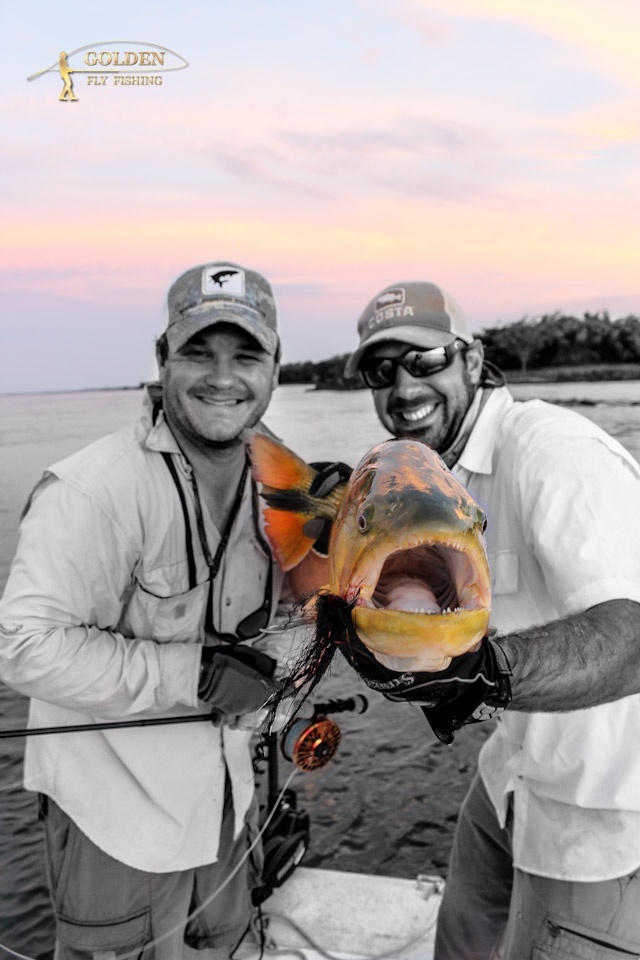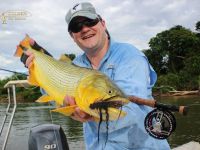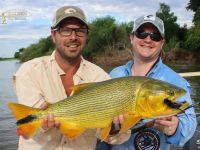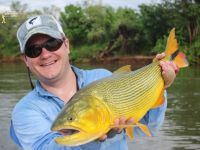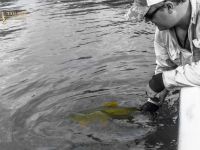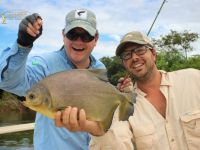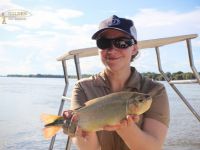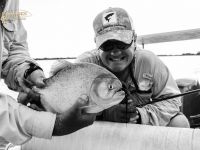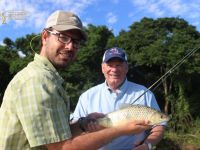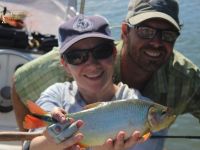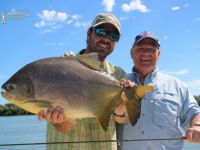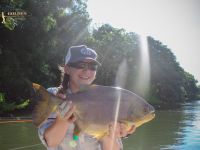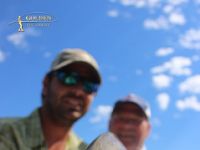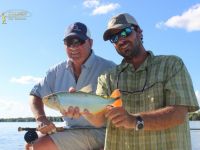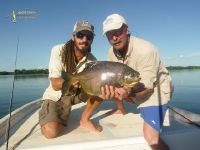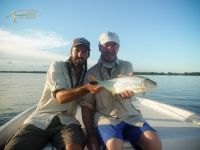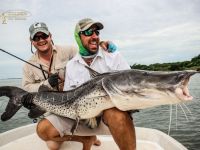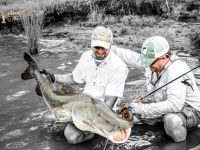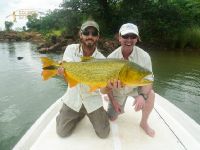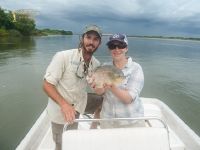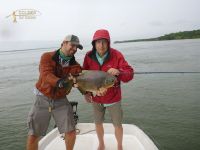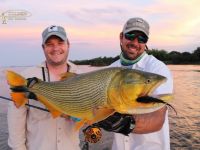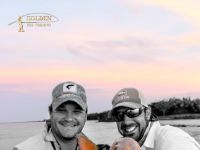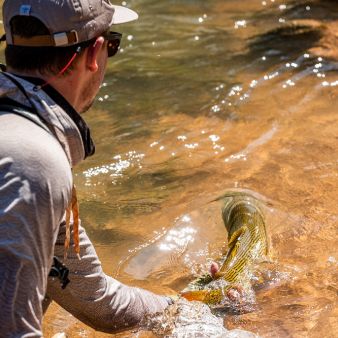From: 02/21/2015
To: 02/28/2015
Type of Water: Freshwater
Species: Golden Dorado, Pacu, Pira Pita, Boga, Surubi, Sabalo, Piranha, Pirapitinga do Sul - Brycon opallinus
"I remember the very first time I heard about golden dorado. It was in 1987, when – at age 8 – I read an article about them in an Australian fishing magazine. At that time I think very few Australian anglers knew anything about them. The article described the writer’s journey to northern Argentina and his battles with this beautiful golden fish which took lures savagely and leaped spectacularly when hooked. At that moment I was ‘hooked’ myself, and I resolved that one day I would also journey to Argentina try to catch one.
It took 25 years, but when my American friend Jack invited me to join him and a few other friends in Argentina to fish for dorado in early 2015, I immediately accepted. Several months later I found myself in Corrientes, in north-eastern Argentina, in pursui View more..."I remember the very first time I heard about golden dorado. It was in 1987, when – at age 8 – I read an article about them in an Australian fishing magazine. At that time I think very few Australian anglers knew anything about them. The article described the writer’s journey to northern Argentina and his battles with this beautiful golden fish which took lures savagely and leaped spectacularly when hooked. At that moment I was ‘hooked’ myself, and I resolved that one day I would also journey to Argentina try to catch one.
It took 25 years, but when my American friend Jack invited me to join him and a few other friends in Argentina to fish for dorado in early 2015, I immediately accepted. Several months later I found myself in Corrientes, in north-eastern Argentina, in pursuit of the golden dorado on the Parana River.
From the moment that I arrived in Corrientes until the moment I left, the staff of Golden Flyfishing treated us like kings. The team of guides - Vittorio, Vicente, and Pablo - understood the Parana intimately, and knew where to find all of the specieis that we fished for. They were also knowledgeable about the local wildlife and culture, and provided fascinating information about Argentina in general and the Corrientes / Parana region in particular.
Off the water, we were equally pampered. Our accommodations were cosy and comfortable. There were very few biting insects around the lodge. Our meals were truly exceptional – resident chef Pedro provided a range of dishes that were perfectly cooked and presented. You will not go hungry! My favourite dishes were the traditional asado barbecue, and a very tasty homemade pasta. We were fortunate to share a meal one evening with the guides’ family in their home. Their warmth and hospitality was truly humbling.
The golden dorado fishing was wonderful, and was well worth the 25 year wait. They hit the fly hard, jump repeatedly, and are beautiful to hold and to photograph. Most of the golden dorado fishing involved casting from the boat at structure along the shoreline.
Dorado are ambush hunters and like to lie up beside sunken rocks, fallen trees, and steep underwater drop-offs. Accurate casting is important and very often we had only one chance at each likely spot. However, a few times, we also found dorado schooling and herding baitfish in open water. When we encountered these fish, we found that they were very willing to eat our flies.
I found that a 9 weight ECHO3 rod was fine for the dorado, as it helped to cast the large flies that we used. I used Andino flies on 3/0 and 4/0 hooks, mainly in black or black and red, and I liked the RIO Outbound Short F/I line with the 30 foot intermediate head and a sinking Airflo polyleader. 25 – 30 pound fluorocarbon and 30lb RIO knot table wire were used for the tippet.
There are a number of other species in the Parana that can be targeted with flies. A recent development there involves fishing for pacu with plastic beads that imitate fruit that has fallen into the river from overhanging trees. Pacu love to eat these fruits and will often gather underneath such trees, waiting for the fruit to fall. A fly that drops into the water with a realistic “plop!” and sinks slowly is often snatched by a pacu. Pacu fight very hard and use their broad tails to dive into the safely of tree roots when hooked. They are difficult to land, but our group landed several, the largest a 6 kilo fish caught by Jack.
In addition to pacu, there are other fish available: pacu-i, boga, piranha, palometta, and the beautiful pira pita. We caught all of these species, mostly on 6 weight rods, which provided great sport.
Australian dream...
WRITTEN BY THOMAS ANDREWS.
